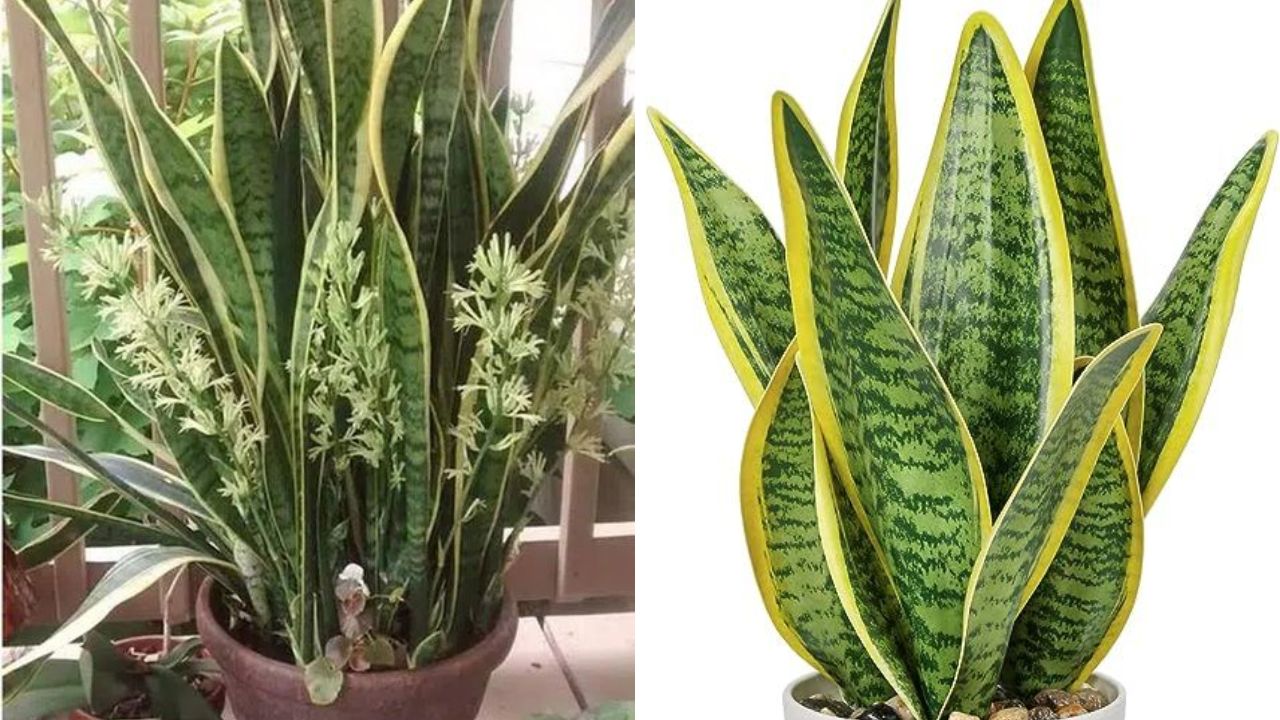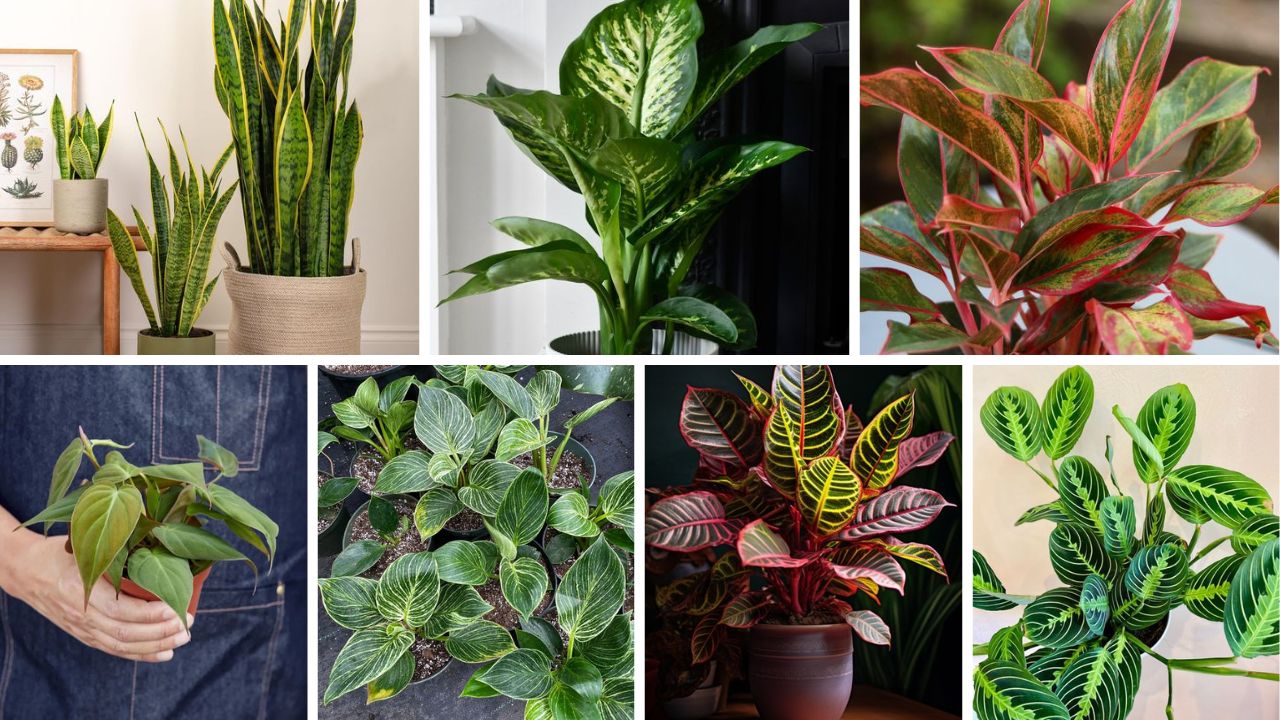Some lady slipper orchids are uncommon, endangered, or have distinctive color patterns and shapes. Lady slipper orchids are the most primitive species still in existence today, and they belong to the orchid genus Cypripedium. The majority are terrestrial, developing in the earth in temperate regions all over the world.
The genus include moccasin flowers, which are native to the northern hemisphere, and lady slipper orchids, which are distinguished by a pouched lip that resembles a shoe or slipper toe.
A number of U.S. states have designated various species as vulnerable or endangered. The primary causes of this are habitat degradation and over harvesting. These uncommon orchids are sluggish to germinate and spread, and they have very particular growth requirements.
Table of Contents
ToggleLady Slipper Orchid Overview
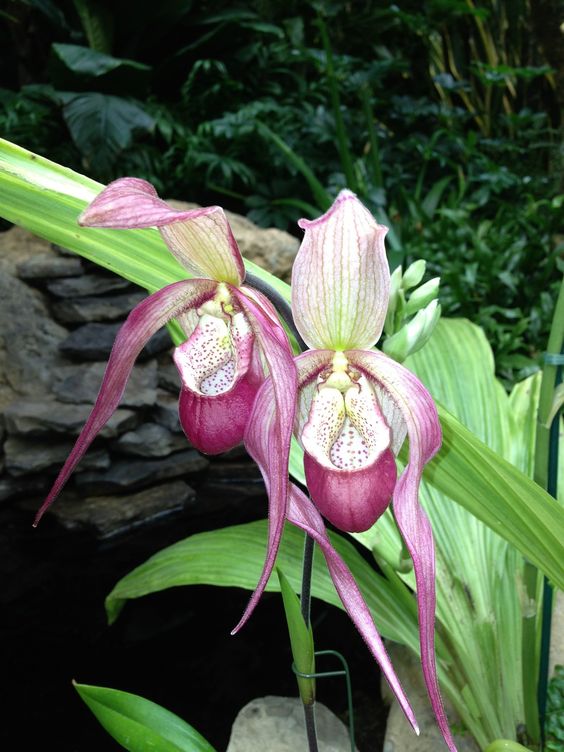
| Common Name | Lady slipper orchid |
| Botanical Name | Cypripedium |
| Family | Orchidaceae |
| Plant Type | Perennial monocot |
| Mature Size | 6-15 in., flower spikes to 40 in. |
| Sun Exposure | Low, indirect |
| Soil Type | Loose, well-draining, bark, moss |
| Soil pH | Neutral 6.0 to 7.0 |
| Bloom Time | Mid-winter and mid-summer |
| Flower Color | Mixed and varied combinations |
| Hardiness Zones | 2-9 (USDA) |
| Native Area | Europe, Asia, North America |
Lady Slipper Orchid Care
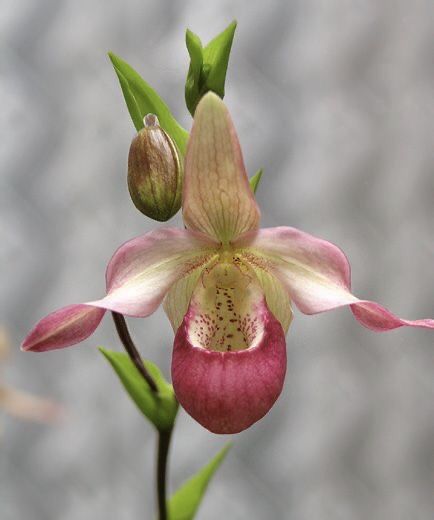
Sympodial in nature, lady slipper orchids have several growth points spaced along a horizontal stem. There are occasional tall plants in this orchid genus, although they are uncommon. Most only grow to a height of 6 to 8 inches in their natural habitat, with flower spikes measuring around 15 inches. Care varies vary depending on the variety of orchid you have because different species might be classified as warm or cold growing. Inquire with your grower about the natural origins of your plant, specifically the elevation.
Light Requirements
This orchid needs shade because it grows in low light. Put it in a south-looking window that is partially shaded or facing east. Fluorescent lights are also effective. Six to twelve inches above the greenery, hang lights. Certain types of terrestrial orchids, when grown outside, favor early full light and afternoon shade. Some types only like sun that is dappled throughout the day.
Soil
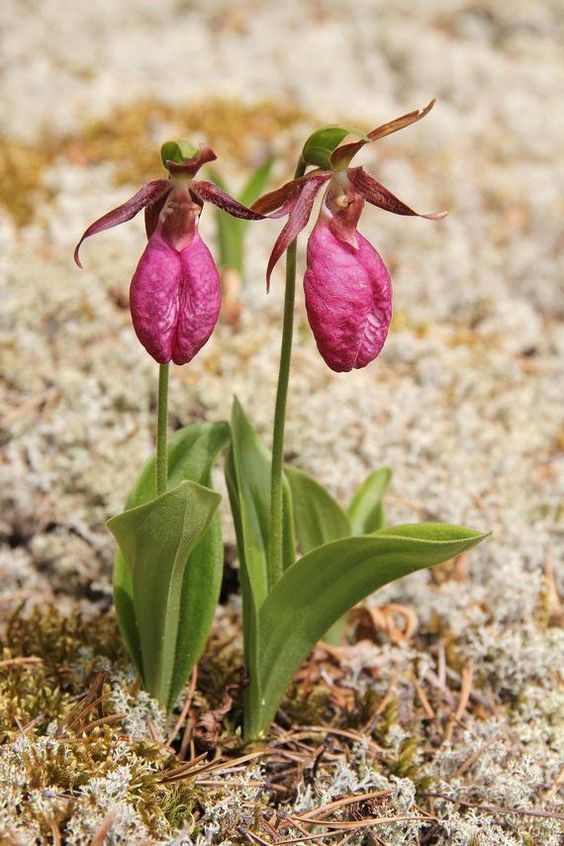
The majority are terrestrial orchids, which only grow in certain kinds of soil. Crushed dried oak leaves, medium-grade fir bark, and shredded osmunda bark are all excellent options for potting material. Don’t pack the mixture too densely.
Watering
Lady slipper orchid stems, like those of other sympodial orchids, use pseudobulbs to store nutrients and water, allowing them to go for extended periods of time without experiencing stress. Twice a week watering may be necessary for your orchid, depending on its growing conditions.
Steer clear of chemically treated water, or let it settle for a few days before utilizing. It is important to keep the potting media damp but not soggy; yet, some types that thrive in damp environments could favor a more liquid solution.
Some can be grown indoors, but they require extremely precise conditions, including a dip of 10 to 15 degrees at night.
Temperature and Environment
Varieties of mottled leaves do best at daytime temperatures of 75 to 85 degrees Fahrenheit and in nighttime temperatures of 60 to 65 degrees Fahrenheit. Green leaf varieties should be kept between 75–80 degrees Fahrenheit during the day and 50–60 degrees Fahrenheit at night. Although many gardeners are successful producing both varieties in the same temperature range, these are recommended temperatures.
You can keep the orchid pot at a suitable humidity of 40 to 50 percent by placing it on a gravel tray that has been partially filled with water. The pot’s bottom shouldn’t come into contact with water. Avoid allowing moisture to remain on the plant’s leaves or crown when the humidity is low. Air movement is crucial when humidity levels are high, and this may call for a fan or dehumidifier.
Higher humidity levels may be required for cultivars that love soggy environments. These types will also need an overnight drop in temperature of 10 to 15 degrees.
Fertilization
The plump, hairy roots of lady slipper orchids are susceptible to burning if enough fertilizer is used, making them sensitive to fertilizer. The growing medium has some bearing on how frequently and what strength to add. Osmunda bark needs less frequent and stronger fertilizer solutions because it contains nutrients. Use 30-10-10, or any other high-nitrogen fertilizer, if your orchid is housed in fir bark. Applying 1/4 to 1/2 strength once every two weeks is one suggestion.
To get rid of dangerous salts, the orchid needs to be cleaned once a month with fresh water.
Types of Lady Slipper Orchids
The deep pink, 3-inch-long flowers of Cypripedium acaule, sometimes known as pink lady slipper, bloom in late June and early July. This kind smells sweetly like flowers and is quite aromatic.
Yellow lady slippers, or Cypripedium calceolus, are primarily found in rich woodlands or along swamp margins. In early April, they bloom with buttery yellow flowers.
Greater yellow lady slipper, Cypripedium parviflorum pubescens, can reach a height of two feet with flower petals as large as six inches.
Another huge species, Cypripedium reginae (showy lady’s slipper), grows to be one to two feet tall and has white blooms with pink streaks that appear in late spring or early summer. Wet meadows and marshes are its natural habitat.
White lady’s slippers, or Cypripedium candidum, are little plants that grow to a height of 6 to 12 inches. Considered endangered it may be available from reputable nurseries.
Pruning
Lady slipper orchids rarely require pruning. Nonetheless, it’s a good idea to check the plant every year after it blooms and apply new planting soil. In order to stop the spread of root rot, remove any sick leaves or brown roots.
Propagating Lady Slipper Orchids

Lady slipper orchids have three methods of reproduction. The wind scatters thousands of tiny seeds, but only certain kinds of fungi allow them to sprout. Additionally, they procreate and colonize via spreading the rhizome. Even division rarely results in a plant that is mature enough to bloom in the first five years; germination can take many years. It is advisable to leave these intricate techniques to orchid experts as they necessitate a greenhouse growth environment.
Certain types give rise to keikis, the simplest way to multiply your plant. Removing a keiki from certain other varieties of orchids is a little more complicated, but it is doable with the correct patience and attention to detail. After assembling a small pot, fungicide, planting media, and a sharp, sterile cutting tool, proceed as follows.
- As soon as you notice the keiki starting to take shape, pack the potting medium around the young stem in an attempt to make a pot inside the original orchid pot.
- Watch for the keiki to start taking on roots.
- When there are a few healthy roots, cut the baby orchid from the parent plant using the knife, being careful to keep the roots attached.
- Apply fungicide to the stem’s cut end. Never use fungicide on the roots.
- Put the tiny orchid in a small pot, no bigger than 2 to 4 inches, with dry shredded leaves and osmunda or fir bark within.
- Water thoroughly but gently, allowing any surplus to drain off. After that, put the orchid in a spot with minimal indirect light or shade.
- Move the orchid to a more permanent location as soon as you notice fresh growth, bearing in mind that it likes low, dappled light and shade.
Potting and Repotting Lady Slipper Orchids
Though they don’t require big pots, lady slipper orchids thrive when they are not overly confined to them. It is advised to preserve no more than three lady slipper orchid stems in a single container if your plant has reached the maturity stage where it can produce new stems. It is adequate to use six-inch pots with good drainage holes.
Every year or two, the orchid can be repotted, either in the same pot or a different one. Repotting should happen after the bloom season is over, mostly to replenish expended material. Now is the ideal time to inspect the orchid and perform any necessary pruning. This is how you should proceed.
- Take hold of the main stem and invert the pot. The orchid and loose medium should be able to slide out with ease.
- Examine the roots, leaves, and any remaining flower spikes.
- Continue with the required trimming. Trim spent roots, dried or broken leaves, and flower spikes.
- If you choose to use the original pot, check it for any signs of fungus or salt accumulation, such as white, chalky patches. If required, clean and disinfect the pot, or get a new one.
- After placing the orchid in the pot, cover the roots with planting medium. Make sure the rhizome is covered. In the event that aerial roots are present, let them grow naturally without attempting to push them within the pot.
- Give the orchid a few days to a week to recuperate after giving it a gentle but thorough watering before proceeding with the regular fertilizer.
Common Pests & Plant Diseases
Mealybugs, which are most often seen on the undersides of leaves of lady slipper orchids, are distinguished by their tiny, white, cottony webs. Use a q-tip dipped in isopropyl alcohol to gently swab the afflicted regions.
Flowers with small black patches or spots on them are indicative of botrytis petal blight. Usually, inadequate air circulation or excessive humidity are the causes of this. Take out the damaged sections, try installing a fan, or move the orchid somewhere brighter. However, make sure the plant only gets soft, indirect light.
How to Get Lady Slipper Orchids to Bloom?
Blooms on lady slipper orchids can endure up to three months, and they bloom at least once a year. While the majority only yield one or two flowers, some more recent hybrids yield several. Lady slipper orchids die back after flowering in the early summer and don’t grow again until the following spring.
As the bloom period draws near, use a fertilizer with a slightly greater phosphorus content to support flowering. At night, keep the orchid completely dark.
As with other orchids, creating a precise, regular care schedule is the best approach to guarantee flowering.
Common Problems With Lady Slipper Orchids
The majority of problems are caused by incorrect light exposure, temperature swings, or watering practices.
Yellowing Leaves With Black Spots
When the orchid is subjected to extreme cold or large temperature swings, this issue may arise.
Dry or Dark Leaf Tips or Edges
I think the orchid is sunburned. Make sure it is in an area with only indirect, dappled light.
Stunted Growth or Sudden Flower Loss
Use room temperature or lukewarm water at all times. Roots can be harmed by cold water.

